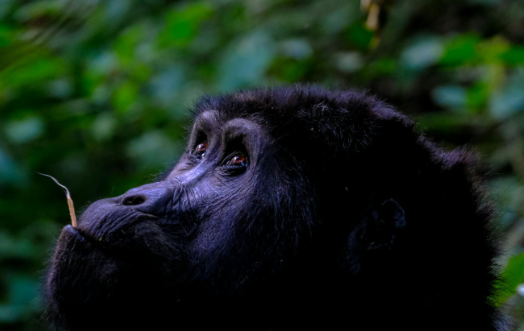How Gorillas Impact Biodiversity
Gorillas are not just magnificent creatures; they play a crucial role in maintaining the biodiversity of their habitats. As incredible seed dispersers and ecosystem engineers, their presence is vital for the health of forests and the numerous species that inhabit these environments. Understanding their impact can help us appreciate the interconnectedness of wildlife and the importance of conservation efforts.
Ecosystem Engineers
Gorillas are often termed “ecosystem engineers” because of their substantial influence on the environment. Their feeding habits, which include munching on various plants, help shape the landscape of their habitats. By consuming certain species, they open up space for other plants to thrive. Additionally, when they move through their territories, they contribute to seed dispersal. As gorillas consume fruits and vegetables, they excrete seeds in different areas, aiding in plant reproduction and diversity. Without these remarkable animals, many plant species could struggle to survive.
Seed Dispersal Champions
One of the most significant contributions of gorillas to biodiversity is their role in seed dispersal. These gentle giants primarily feast on fruits, which play a crucial role in their diet. As they roam, they consume fruits and later excrete the seeds in new locations, helping to plant new trees and plants across their territory. This not only promotes plant variety but also supports other wildlife, creating a balanced ecosystem. Studies have shown that certain tree species, which rely on gorillas for seed dispersion, face severe declines when gorilla populations decrease. Thus, the health of gorilla populations directly correlates with the health of forest ecosystems.
Promoting Forest Health
Gorillas also contribute to forest health in more indirect ways. Their activities help maintain the structure of forests, creating more diverse microhabitats. By foraging for food, they help clear underbrush, allowing sunlight to reach the forest floor and enabling younger plants to grow. This promotes a richer environment not just for plants but for numerous insects and animals that rely on a healthy forest structure. In this manner, gorillas support various species, affirming their importance in fostering biodiversity within their ecosystems.
In conclusion, gorillas are much more than just icons of wildlife; they are vital to the health of the ecosystems they inhabit. By understanding their roles as ecosystem engineers and seed dispersers, we gain insight into the delicate balance of nature. Protecting gorillas and their habitats is essential for preserving biodiversity. If you’re passionate about wildlife conservation, consider learning more about gorillas and supporting organizations dedicated to their protection. Together, we can ensure that these magnificent creatures continue to thrive and maintain the health of our planet.

